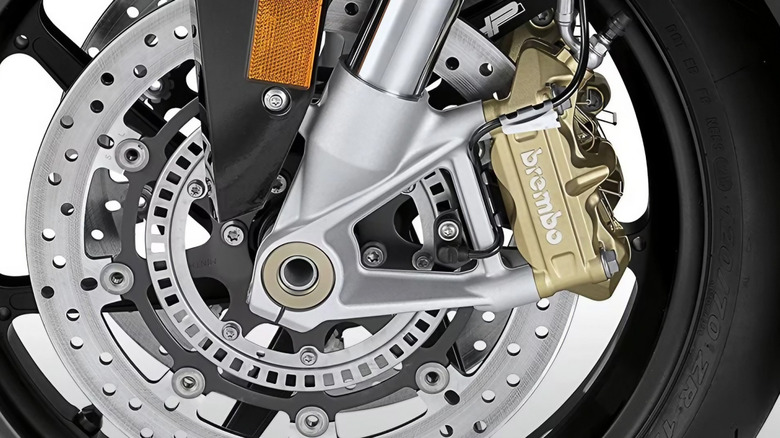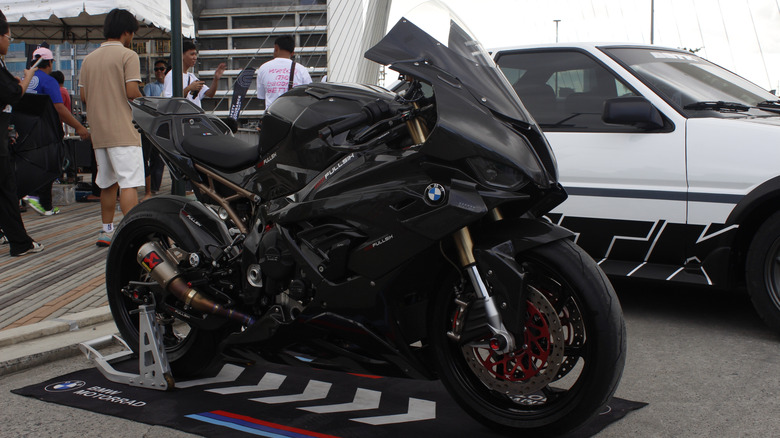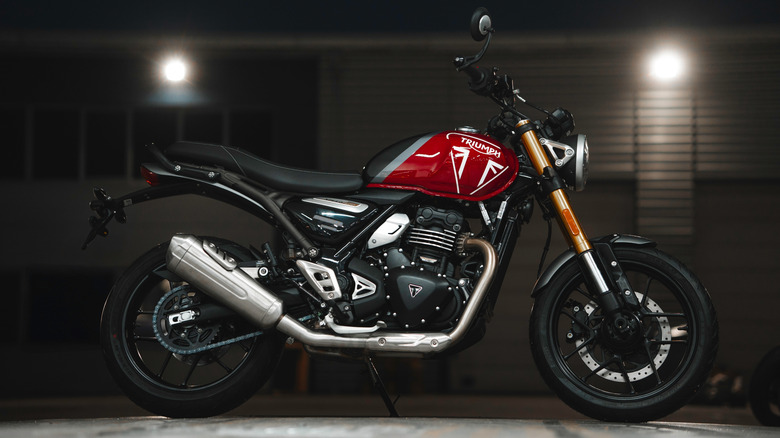How Does Motorcycle ABS Work And Is It Different From Cars?
It doesn't matter how skilled you are on a motorcycle — that heart-stopping moment where you have to slam on the brakes is inevitable. Things can go sideways quickly in such cases, especially when you have two wheels instead of four under you. The front wheel is especially prone to locking up and sending you into a skid. That's precisely where ABS steps in to intervene.
ABS stands for Anti-lock Braking System, and its entire job is to prevent your motorcycle's wheels from locking up during hard braking. The system uses sensors, typically mounted on the rotors or wheel hubs, to constantly monitor how fast each wheel is spinning. This data is fed to a control unit that, if it detects a wheel is about to stop rotating completely while the bike is still moving, springs into action. A hydraulic unit then very briefly reduces the brake pressure you're applying, allowing the wheel to spin again and regain traction before pressure is reapplied.
Now, this isn't exactly a new concept. In fact, the first motorcycle to feature it – the BMW K100 — got it all the way back in 1988. Then, Japanese manufacturers like Honda and Yamaha had followed suit by 1992. Today's systems are even more advanced, with many bikes using dual-channel ECUs that get info from both wheels. Some bikes go the extra mile by incorporating gyroscopes to detect the bike's lean angle for smarter braking in turns.
Does it work differently from ABS in cars?
While the fundamental principle of preventing wheel lock is the same for both cars and motorcycles, there are some key differences in their application and consequences. For one, braking is a much more complex task for a rider than it is for a driver. While some mindfulness while riding can go a long way, motorcycles still aren't as inherently stable as four-wheeled vehicles, and a locked wheel has far more catastrophic potential.
In a car, locking the brakes might lead to an uncontrolled skid. On a bike, a locked wheel can easily result in a total loss of balance, causing the motorcycle to fall or even flip over. Most bikes also have separate front and rear brake controls, requiring the rider to properly proportion the braking force, a skill that can go out the window in a panic situation.
The main job of motorcycle ABS, therefore, is to help keep the rider upright and stable by preventing that initial lock-up that starts the crash cascade. It allows a rider to slam on the brakes in an emergency with confidence, knowing the system will manage the traction. So while car ABS is about maintaining steering control during a stop, motorcycle ABS is fundamentally about maintaining stability itself.
ABS makes bikes safer but has some downsides too
The biggest pro is, of course, safety. An IIHS study of bikes from 2013-2019 found that models with an anti-locking system were involved in 22% fewer fatal accidents. The benefit varies by bike type, with the crash rate reduction being as high as 32% for cruiser-style motorcycles. Another report by the Centre of Automotive Safety Research suggested that if all motorcycles in South Australia had ABS, it could result in an annual reduction of seven fatalities and 57 serious injuries. Beyond preventing crashes, the report highlighted that the technology can reduce a motorcycle's overall stopping distance by up to 17% and allows you to maintain steering control even when braking at maximum force.
That said, the system isn't perfect for every situation. In off-road conditions, ABS can actually make it more difficult to control the motorcycle. Adventure riders sometimes prefer to intentionally lock the rear wheel to help the bike dig into soft ground to stop quicker, which is why many off-road-capable bikes have switchable ABS. The systems also add cost and a little weight to the bike.


